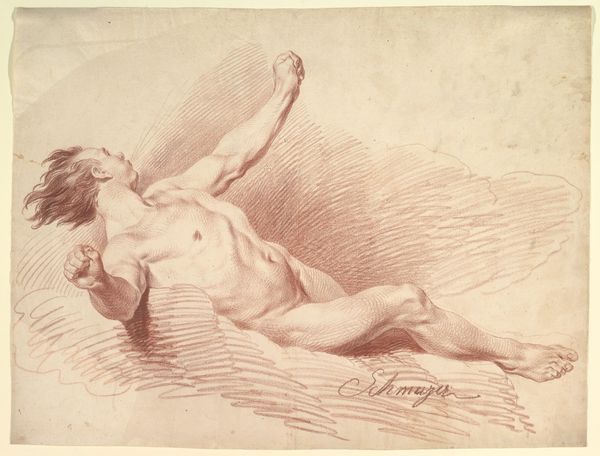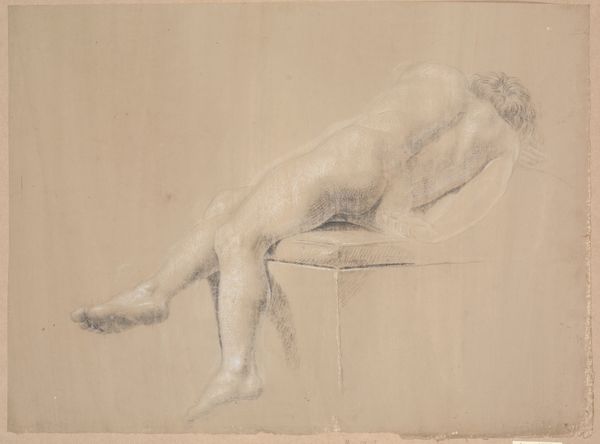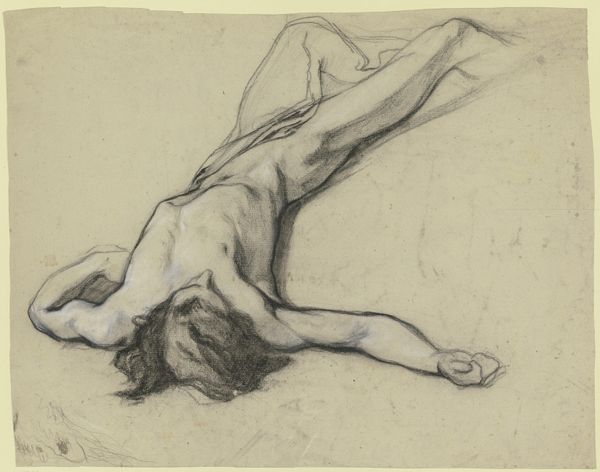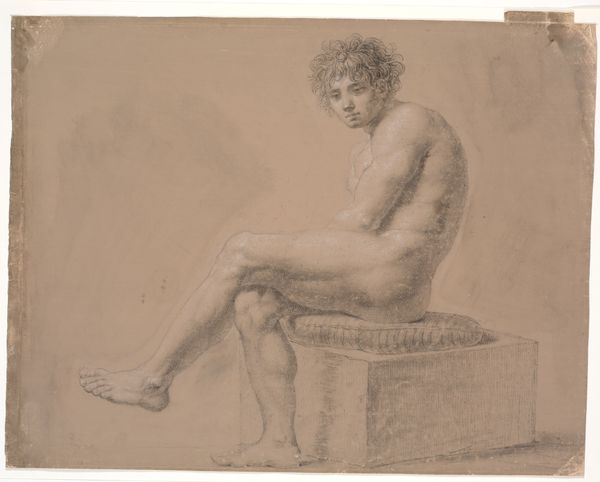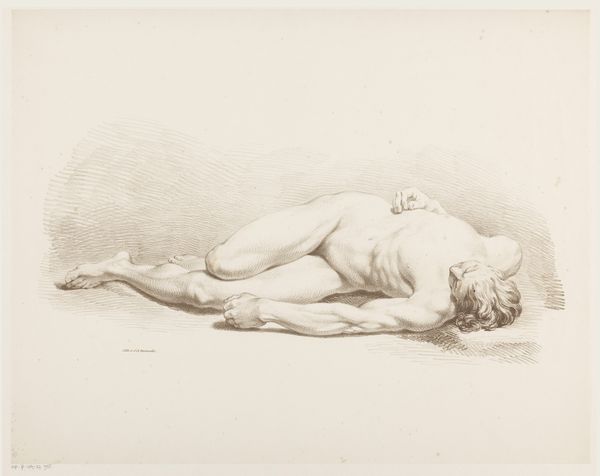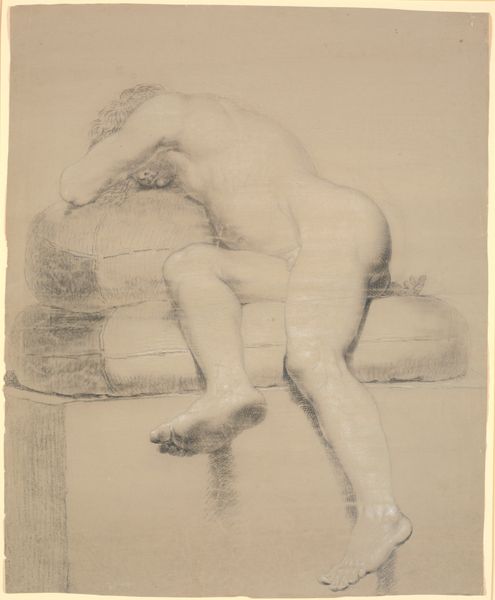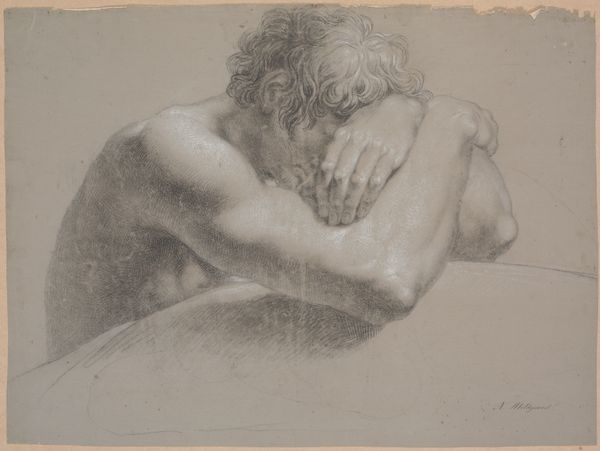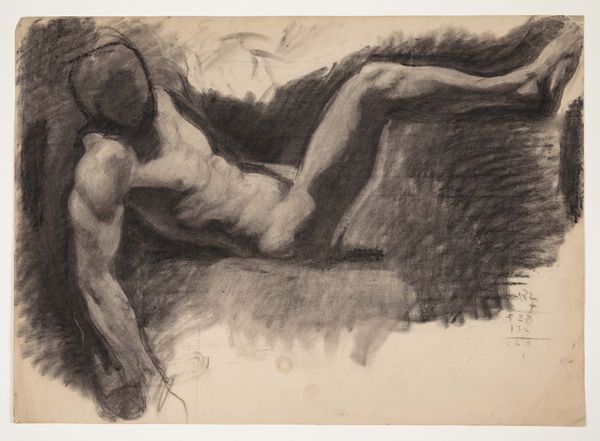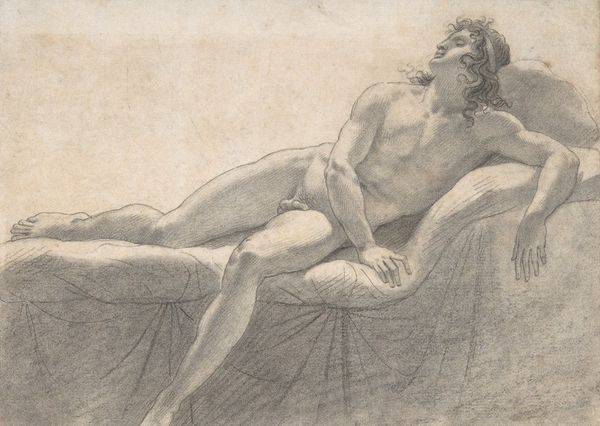
Liggende model. Mod venstre. Hoved og overkrop hvilende på en pude, benene hævet og venstre ben hvilende på en anden pude 1778 - 1809
0:00
0:00
drawing, charcoal
#
drawing
#
self-portrait
#
charcoal drawing
#
romanticism
#
charcoal
#
nude
Dimensions: 435 mm (height) x 600 mm (width) (bladmaal)
Curator: Let's talk about this charcoal drawing, titled "Liggende model. Mod venstre", or "Reclining model. To the left", likely created between 1778 and 1809. Editor: What strikes me first is this intense sense of weariness, of raw emotion spilling out through the charcoal. It's in the shadowed face, the slumped posture... I feel a weight there, a private burden. Curator: The use of charcoal is fascinating. Notice how the artist leverages its powdery quality to build up tonal depth. There is clear craftsmanship that turns this raw material into this emotional scene, inviting considerations of artistic labor and the material's direct touch. Editor: Yes, exactly! Charcoal itself is so elemental, almost primal. To use it for such a delicate, vulnerable portrayal... it's like finding strength in fragility. I keep wondering about the model. Who were they? What were they feeling? Curator: The anonymity lends the piece a universal quality. The drawing focuses on a study of form, of musculature. Consider its possible purpose within the artist's wider practice—it’s an artwork located in SMK - Statens Museum for Kunst. We might ask: How would a patron view this image? Would the model occupy a class defined role in relation to both the artist and their patron? Editor: Oh, interesting—that’s an angle I had not immediately considered. Looking at his pose… his covering of his face might imply shame, distress, something raw he needs to obscure for the gaze of the public, as much as even, dare I say, his own gaze. It pulls us in as voyeurs. Curator: Indeed. Furthermore, looking at the available literature may highlight the drawing's origins; studying similar work during this time we are likely to expose class issues. I suspect the intention was never explicitly confessional, as we view it today. The charcoal medium itself speaks to artistic tradition that goes as far back as ancient murals. Editor: Maybe the most compelling pieces are like that, though, defying a single neat answer. The raw emotion paired with art historical materiality just deepens the intrigue. Curator: A confluence that reminds us to be careful not to over-impose the sensitivities of today on artistic work from past centuries. Editor: Absolutely. What a reminder. Well, it’s been fascinating to pick that apart with you. I definitely see this piece differently now!
Comments
No comments
Be the first to comment and join the conversation on the ultimate creative platform.
